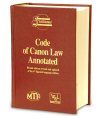Caveat lector: there really is no "functional laicization"
I think that kind of description is going to confuse people. Describing AWOL priests as "functionally laicized" or as "permanently inactive" or as "resigned from ministry", and so on, might seem more palatable to the public, but it masks a serious problem: none of those categories exist canonically, and easy resort to such labels, in my opinion, just puts off dealing with the problems.
There's only one way to enter the clerical state, namely, by reception of diaconal orders per 1983 CIC 266.1 which rite results in the "incardination" of cleric to a specific diocese or institute of consecrated life. If one has not received diaconal orders (need I say, validly?), then one is not a cleric. But once a man has entered the clerical state, there are only two ways out: by dismissal per 1983 CIC 290, 2, or by (voluntary or imposed) laicization under 1983 CIC 290, 3, either of which process results in the complete removal of the cleric from the diocesan or institute rolls.
Meanwhile, the alleged grey zone of "functionally laicized", etc., is not a zone at all; if a cleric has not been dismissed or formally returned to the lay state, he's still a cleric, with all the rights and duties of a cleric. Granted, those rights can be, and in problem cases increasingly are these days, restricted (per 1983 CIC 273, 1044, 1333, and 1722, to name some) but, as Rome has made clear, such restrictions do not alter the status of a cleric as a cleric. Even the emerging notion of clergy "administrative leave" needs to comply with, if not in name, at least the relevant substantive requirements of canon law lest a new category of clergy appear outside the normal parameters of Church law and discipline.
Besides plenty of good canonical reasons to treat clerics in accord with ecclesiastical law, civil law affords some others: when, for example, questions of negligent supervision of clergy arise, civil law can look to the canonical institute of incardination to connect a specific cleric to a specific diocese or institute. If, therefore, due to the recalcitrant behavior of a cleric, such supervision is not really being exercised, ecclesiastical superiors should consider whether it is wise to leave the impression that it is.
It's a case by case call, of course, but in the meantime, I don't see how labeling a problematic clergy situation as something it is not (indeed, as something by canon law that it cannot be) helps much. Instead, using more accurate terminology today will generally help us avoid confusion tomorrow.
Read more about these issues: Griffin, "Canon 1722", in 1988 CLSA Adv. Opin., 103 (favoring the more ambiguous status), versus Ingels, "Canon 1722", 2002 CLSA Adv. Opin. at 161, and Daly, "Canon 1722", 2003 CLSA Adv. Opin. at 104, (against ambiguous status).









<< Home